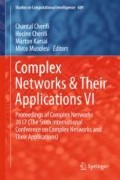Abstract
Gene regulatory networks (GRN) are often modeled by Boolean networks to describe their structures and properties. Constraint logic programming (CPL) can be used to infer networks that satisfy constraints applied on their structure and their dynamics. Such approach yield complete satisfiable network sets that can be large. Having such complete sets allows to compare networks between each other and to understand how they can be constructed from other networks. In the present paper, we describe this inference approach applied to a particular class of thresholded Boolean automaton networks, a variation of Boolean neural networks, focusing on a necessary step to reduce the size of satisfiable sets to sets of non-redundant networks. For that purpose, we use a recent non-monotonic logic programming technology, namely Answer Set Programming (ASP). Our approach managed to yield complete network sets satisfying a given behavior, namely having a specific dynamics – a binary motif fixed in advance – on at least one node of networks of a given size. This allows us to illustrate how general rules could explain some relations of composition between these networks.
Access this chapter
Tax calculation will be finalised at checkout
Purchases are for personal use only
References
Ben Amor, H., Corblin, F., Fanchon, E., Elena, A., Trilling, L., Demongeot, J., Glade, N.: Formal methods for Hopfield-like networks. Acta Biotheor. 61, 21–39 (2013)
Corblin, F., Tripodi, S., Fanchon, E., Ropers, D., Trilling, L.: A declarative constraint-based method for analyzing discrete genetic regulatory networks. Biosystems 2, 91–104 (2009)
Elena, A., Ben-Amor, H., Glade, N., Demongeot, J.: Motifs in Regulatory Networks and their Structural Robustness. In: 8th IEEE International Conference on BioInformatics and BioEngineering, BIBE 2008, Athens, Greece (2008). IEEE Trans. Inf. Tech. Biomed.
Elena, A.: Robustesse des réseaux d’automates booléens à seuil aux modes d’itération. Application à la modélisation des réseaux de régulation génétique. Ph.D. Thesis (French), Université Joseph Fourier (2009). https://tel.archives-ouvertes.fr/tel-00447564/
Gebser, M., Kaminski, R., Kaufmann, B., Ostrowski, M., Schaub, T., Schneider, M.: Potassco: the potsdam answer set solving collection. AI Comm. 24, 107–124 (2011)
Gebser, M., Kaminski, R., Obermeier, P., Schaub, T.: Ricochet Robots Reloaded – A Case-study in Multi-shot ASP Solving. In: Advances in Knowledge Representation, Logic Programming and Abstract Argumentation. vol. 9060, pp. 17–32. LNCS (2015)
Glade, N., Elena, A., Corblin, F., Fanchon, E., Demongeot, J., Ben Amor H.: Determination, optimization and taxonomy of regulator networks. The example of Arabidopsis thaliana flower morphogenesis. IEEE AINA’ 11, IEEE Press, Piscataway, 488–494 (2011)
Glass, L., Kauffman, S.: The logical analysis of continuous, nonlinear biochemical control networks. J. Theor. Biol. 39, 103–129 (1973)
Hopfield, J.J.: Neural networks and physical systems with emergent collective computational abilities. Proc. Nat. Acad. Sci. U.S.A. 79, 2554–2558 (1982)
Kauffman, S.: Metabolic stability and epigenesis in randomly constructed genetic nets. J. Theor. Biol. 22, 437–467 (1969)
McCulloch, W.S., Pitts, W.: A Logical calculus of the ideas immanent in nervous activity. Bull. Math. Biophys. 5, 115–133 (1943)
Thomas, R.: On the relation between the logical structure of systems and their ability to generate multiple steady states or sustained oscillations. Springer Ser. Synerg. 9, 180–193 (1980)
Author information
Authors and Affiliations
Corresponding author
Editor information
Editors and Affiliations
Rights and permissions
Copyright information
© 2018 Springer International Publishing AG
About this paper
Cite this paper
Vuong, QT., Chauvin, R., Ivanov, S., Glade, N., Trilling, L. (2018). A Logical Constraint–based Approach to Infer and Explore Diversity and Composition in Thresholded Boolean Automaton Networks. In: Cherifi, C., Cherifi, H., Karsai, M., Musolesi, M. (eds) Complex Networks & Their Applications VI. COMPLEX NETWORKS 2017. Studies in Computational Intelligence, vol 689. Springer, Cham. https://doi.org/10.1007/978-3-319-72150-7_46
Download citation
DOI: https://doi.org/10.1007/978-3-319-72150-7_46
Published:
Publisher Name: Springer, Cham
Print ISBN: 978-3-319-72149-1
Online ISBN: 978-3-319-72150-7
eBook Packages: EngineeringEngineering (R0)

